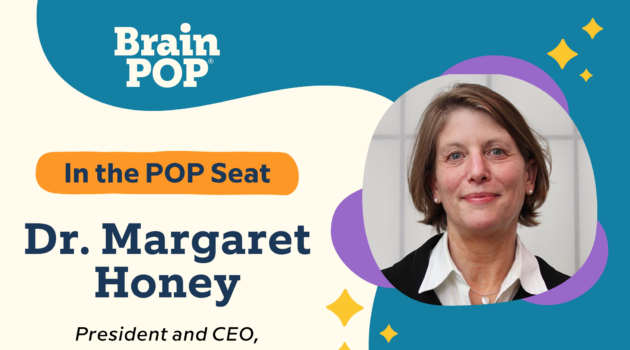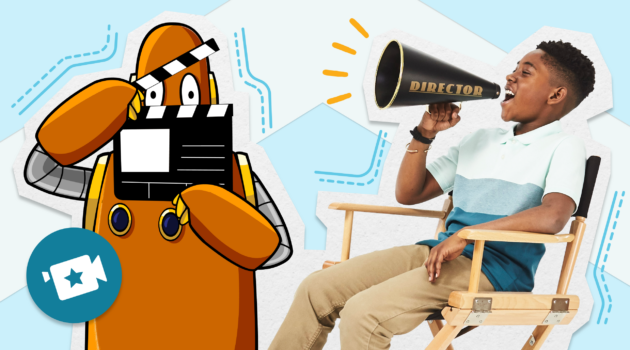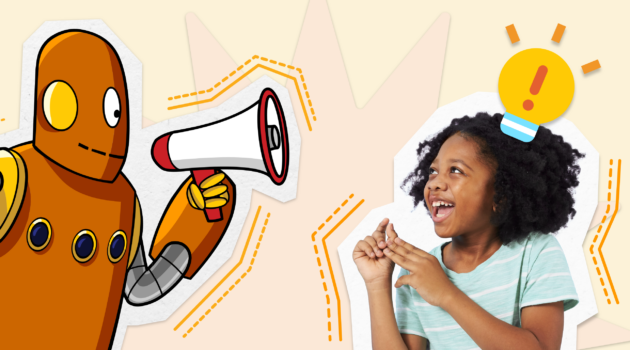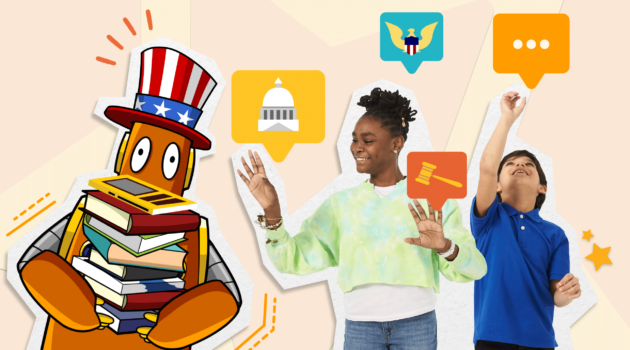Thought Leadership
Mitigating COVID-19 Summer Learning Loss: Educators Weigh In

It’s safe to say this summer will be a little different. While educators and parents may have breathed a collective sigh of relief as a challenging school year came to a close, they are also anxiously anticipating a new school year filled with uncertainty.
One source of apprehension is the “COVID-19 Slide,” a combination of learning loss experienced during summer break compounded by the shift to remote learning over the last few months. With this theme top of mind, in June BrainPOP convened a panel of education administrators and thought leaders to share their perspectives on how to productively navigate summer and back-to-school.
Enter password 1P%qfS%r to view the free, on-demand recording.
The panel, moderated by BrainPOP CEO Scott Kirkpatrick, was hosted Kari Stubbs, Ph.D., our VP of Innovation and Learning. We were joined by Karen Cator, President & CEO, Digital Promise; Cassandre Davis, Ed.D, Founder A Light for Girls, LLC and Equity Instructional Facilitator at Broward County Public Schools; Bill Jackson, Founder, Raise Ready Kids and GreatSchools; and Melissa Sweazy, Principal at Esmeralda Santiago Charter School, Chicago.
Below are five key themes that surfaced in conversation with our panelists, and actionable insights to help inform your forward planning.
Redefine the Parent-Student-Educator Support Triangle
Parents and educators have had their eyes opened during the pandemic. “Parents know so much more now about their child, their learning habits, their attitudes towards learning, what it takes to teach their own children,” said Karen Cator, “and so many parents have done an amazing job. […] I will also say that parents are so much more aware now that teachers have really difficult jobs.”
Panelists spoke about the need to double down on two-way communication and listening throughout this period. The team at Esmeralda Santiago Charter School—a K–8 school serving a predominantly Latinx community—surveyed parents a few weeks in to remote learning to see how they were doing, and identify ways to support them. “I think parents are doing a much better job than what they’re giving themselves credit for,” said Melissa Sweazy, “and I absolutely have evidence and data to support that from our parents and from our families.”
The team learned that moral support from teachers went a long way to move the needle. By offering specific feedback and praise—to students and parents—they were able to increase engagement and improve parents’ perceptions of the efforts they were already making to support their kids at home.
Empower Kids in a Tumultuous World
There is only so much adults and kids can control during the pandemic, so personal goal-setting is crucial. Bill Jackson encouraged educators to invite parents to explore the WOOP (Wish, Outcome, Obstacle, Plan) approach. He also highlighted the RULER program as an opportunity to develop a “shared purpose of collective” by “aligning around objectives and strategies for helping everybody […] grow their capacity for ‘recognizing, understanding, labeling, expressing, and regulating’ emotions.”
Parents are naturally concerned about their kids’ ability to socialize in a healthy way, and it can be bewildering to find a meaningful approach while social distancing. “There is just no way around the fact that a middle-schooler deeply wants to engage with peers, and a lot of learning is happening through that engagement,” he said.
Jackson recommended embracing this natural motivation while adapting to the current reality; engagement in a post-COVID world might take the form of an online service project or a safe, offline, socially-distanced activity that invites constructive collaboration between kids.
Dr. Cassandre Davis is a proponent of the self-discovery summer: “Learn how they learn. Give them an opportunity to grow. Teach them something you didn’t learn in school. […] Getting your child to be a critical thinker is step number one. They’ll be able to accomplish everything else.”
Level the Playing Field
Equity was top of mind throughout the conversation. Dr. Davis underscored the benefits of free educational programming delivered via public television stations to meet the needs of families who don’t have internet or devices—or, whose work schedules limit involvement in their kids’ studies.
Additionally, “parents really need to recognize the power that they have in lobbying their school districts. […] We can’t pretend that everybody got the same opportunity all summer long.”
In order to achieve true equity, Karen Cator spoke about the basic need of all students and teachers to have internet connectivity and a personal device at home. This is essential to ensure they maintain a connection with their teachers and peers, and to foster a personalization and feedback loop that simply cannot be achieved on paper or through periodic telephone conversations.
Cator noted that some schools are allowing kids to hold on to borrowed devices over the summer, encouraging them to continue learning and engaging with digital resources and experiences.
Parent equity is also an essential consideration. There is a large variance in parental involvement during remote learning; in some cases, parents are essential workers who must be outside of the home for extended periods. Students from economically disadvantaged backgrounds are also at greater risk of falling behind in school.
The team at Esmeralda Santiago focused on creating an equitable and personalized approach to families. They engaged psychologists and healthcare workers, held online meetings for parents to connect, and offered alternative class times to enable parents to join along with their kids.
For families who needed more support, they added extra touchpoints with the teacher, social worker, and principal. Over the summer, families still have access to all the resources, online platforms, and project ideas, though these are more of a suggestion than an expectation. “I want them to reconnect with their families without the added pressure of school,” said Sweazy.
Embrace Healthy Steps Forward
There has been no shortage of trauma over the last few months. The jarring effects of the pandemic on kids’ routines, and the inequity it has exacerbated, is an overwhelming combination. Remediation and social-emotional healing should be the guideposts for back-to-school 2020, according to Dr. Davis. Both students and educators will need support and time to heal.
“Staff need a minute, they need a break, they need a place where they can have that space to talk about what they’re experiencing.” She spoke about weaving in daily mindfulness exercises once school is back in session. The BCPS team is already holding town halls, virtual seminars, and ongoing conversations with staff. “You have to be gentle with yourself. […] For this, there is no lesson plan.”
Melissa Sweazy is reconsidering what assessment looks like in the fall, with an eye toward students’ needs and balance. The team will focus on quality reading and math assessments, and is also seeking a high-quality SEL state survey for students.
“I don’t think we listen to kids enough,” she said. While we don’t know exactly what learning loss will look like in the fall, Sweazy has always had high academic expectations for her students: “I don’t want to let go of that, but I also know if we don’t have really solid trauma-informed practices and supports built into our school, now, and especially when they come back, that those high expectations are for naught and will just cause additional layers of stress and anxiety.”
Her team is hoping to welcome back the early grades (K–2) first, in an effort to bolster learning for the most vulnerable kids.
Reimagine Future Possibilities
All four panelists expressed optimism for the future. They characterized this moment in time as a golden opportunity to make necessary changes in how we educate kids.
“I think we are going to welcome back some really empowered kiddos and families,” said Melissa Sweazy, “and I know that we’re going to spend a lot of time celebrating them and what they’ve accomplished over these last few months, and listening to them. Student agency is at the core of everything we do at Santiago, and I think that our kids and our parents are more empowered and more mobilized and more motivated and inspired, to be honest with you, maybe than ever before.”
Bill Jackson says it comes down to a mindset shift. He sees “a willingness to try some fundamentally different things. […] Where we’re trying to get to is student agency and ownership and engagement, and parents supporting that alongside teachers.”
Given that fall will most likely include a hybrid in-person and remote learning model, “The face-to-face time that teachers have with students directly, that is going to be like gold,” said Karen Cator.
“It’s not like education was perfect to begin with […] the collateral beauty is that the entire world had to go inside—the entire world was on time out,” said Dr. Davis, “and then all of these horrendous things happened that gave us an opportunity to see what the world is really going through.”
Added Dr. Davis: “We have a national platform to talk about race and racism and the injustices that occur with Black people in this country. […] When else were we going to have everybody’s attention? […] The collateral beauty of 2020, the ‘year of vision’ that I’ve been calling it, is that schools are going to be a lot more accommodating. […] I don’t believe in the word ‘no.’”






